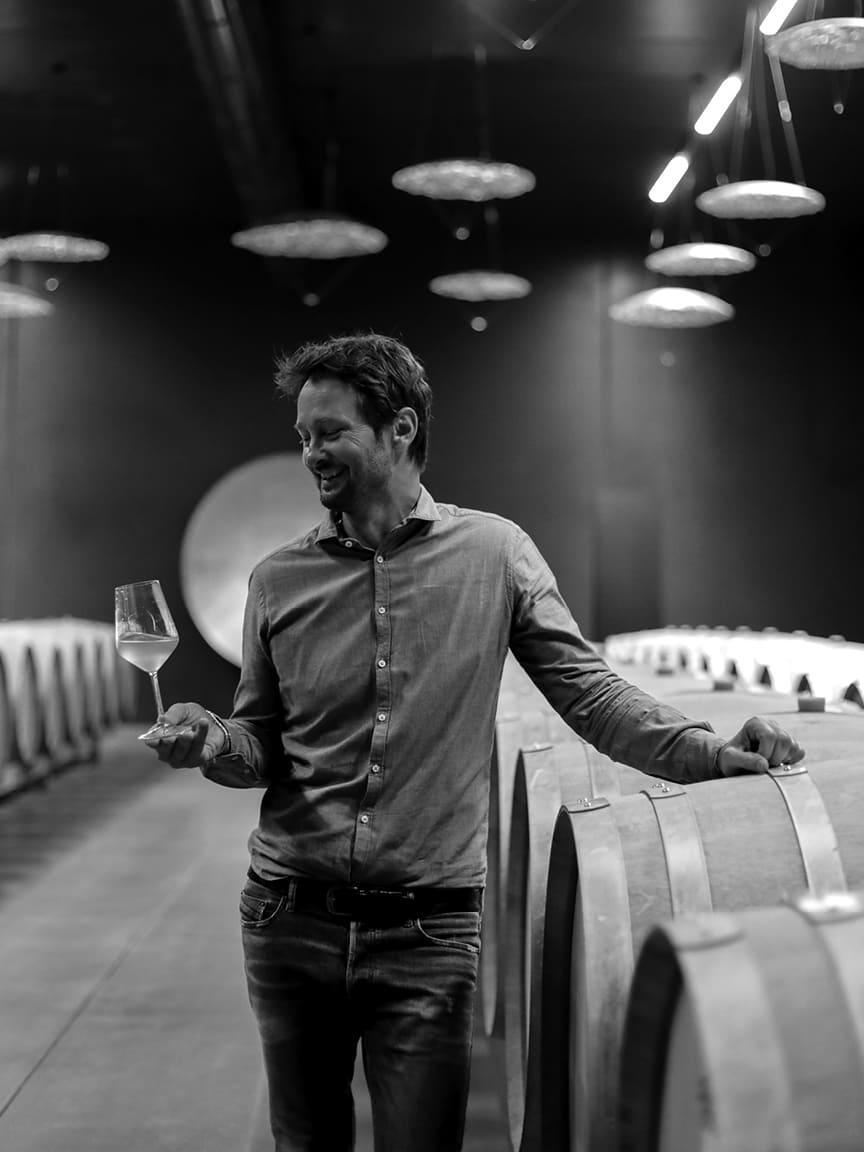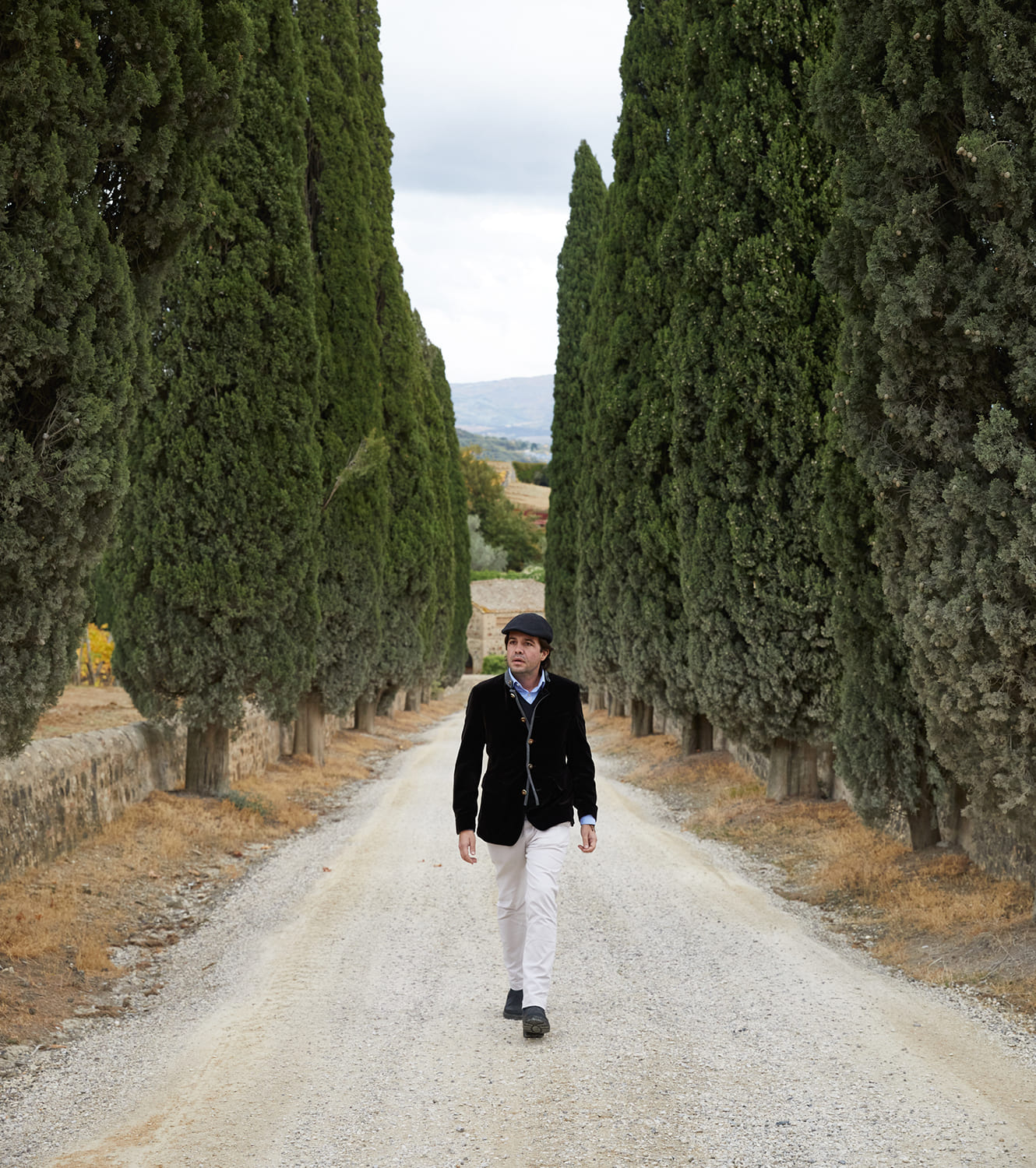
NEW CLASSICS
In a charming fortress town east of Verona, a select group of winemakers are showcasing the true potential of their terroir with some exquisite Soaves, writes Matthew Landry
There is a line of thinking that goes, “The first duty of wine is to be red.” A bon mot, to be sure, but one shared, unironically, by many consumers. Italy, and the Italians that live there, certainly agree. Barolo, Brunello and Amarone; these are the sturdy red wines upon which Italy has built its reputation. In the lee of these giants, however, Soave, an historic appellation in the north of Italy, has continued to quietly reimagine the potential of Italian white wines.
The charming fortress town of Soave is located some two dozen kilometers east of Verona. It is a well-preserved gem, set amid the otherwise drab Venetian flatlands of northeastern Italy. Its namesake wine, at least the best of it, is produced within the Classico area, an expanse of 1,500 hectares (3,706 acres) running from Soave proper to Monteforte d’Alpone.



The picturesque town of Soave is one of the best-preserved medieval villages in Italy. Map showing the Soave territory
Winemaking has a long history in the area, and dates as far back as the Roman Empire. Although Soave is now produced as a dry wine, it was the region’s sweet wines, made via the appassimento method, that first gained renown. This technique, whereby grapes are dried atop bamboo mats to concentrate their sugars, creates unctuous sweet wines of great complexity. Although somewhat rare today, this style of wine persists under the Recioto di Soave DOCG. Modern Soave, though – the dry, refreshing kind – rose to prominence at the turn of the 20th century. Its zone of production, defined as early as 1816, was legally recognized by the Italian authorities in 1931, well before the modern DOC system.
Topographically speaking, the appellation divides neatly in two halves. Its western half, part of which overlaps Valpolicella, is a series of north-south valleys mainly comprised of calcareous marl. The eastern half, to which the Classico area belongs, is defined by gentler slopes of basalt and limestone. The better vineyards are located further north on the gently rolling hillsides of the Monti Lessini, where cool air descends at night, reducing disease pressure and slowing the ripening process. Rather unfortunately, the modern boundaries of Soave now include large tracts of alluvial flatland to the south, areas not suited to quality winemaking.
This means the Soave appellation is generally dominated by mass-market brands and with success largely found outside of Italy. Of the 4.4 million cases of Soave produced each year, less than 20 percent is consumed within the country with more than half of the region’s production going to the large supermarket chains of Germany and the UK. Yet a small cadre of producers still seek to showcase the true potential of their terroir, and the effort to discover these wines is worthwhile. Two notable producers are Prà and Gini, each with their own clear expression of the region’s wines. The former’s accessible Otto blend is a great introduction to the charms of Soave.
However, at the very top of that list sits the historic Pieropan winery – its history dating as far back as 1890, when it was founded by the town physician, Leonildo Pieropan. His sons, Guido and Fausto, carried on the business, and in the early 1930s, Pieropan became the first estate to bottle a wine with the name Soave on the label. By all accounts, however, it was the family’s third-generation Leonildo (or Nino as he was familiarly known) who first demonstrated Soave’s innate potential.
Working first as his family’s viticulturist, Nino took control of the winery in 1970, a time of great change in the Italian wine industry. Teutonic influences were taking hold in the north of the country, as producers adopted the use of stainless steel in the pursuit of cleaner, more reductive wines. Nino invested heavily in these new technologies, while simultaneously reimagining his work in the vineyard. Tracts of lesser quality vineyards were sold off, and he turned his attention to lowering yields and pushing ripeness in the best plots. Emboldened by the success of these efforts, Pieropan quickly produced Italy’s first single vineyard white wine, Calvarino, in 1971.
The Monte Calvarino cru is a special piece of land for the company. Purchased in 1906, it was the first parcel to belong to the Pieropan family. Its terraced vineyard rows enjoy a south-southwest aspect within this natural amphitheater. Farmed organically, and worked by hand, the soils here are volcanic in nature, with a gradient as steep as 25 percent at some points. The outsized influence of this bottling can’t be overstated.
“Pieropan has been focused on quality since the beginning,” writes Andrea Eby, Italian Programs Director for the Wine Scholar Guild. “They have been an inspiration to many of their contemporaries.” She is not alone in her estimation. Ian D’Agata, the world’s leading authority on the native grapes of Italy, is vocal in his belief that Pieropan’s Calvarino is not only the region’s single best wine, but one of the top white wines in Italy.
The wine itself – beautifully textured, lightly aromatic – is a blend of Garganega and Trebbiano di Soave. Garganega, while a noble grape with a long history in the region, was not always the region’s favored variety. As recently as the Second World War, Trebbiano di Soave dominated plantings. Owing to its low yields and propensity for disease, growers in the region shifted to the reliable and vigorous Garganega. More’s the pity, as one should note that Trebbiano di Soave is not, in fact, a part of the humdrum Trebbiano family. Rather, it is a distinct biotype of Verdicchio, another of Italy’s most prized varieties. The combination of the two – the structured, finicky Trebbiano, the charming, fruity Garganega – combine to make a wine of great ageability.
Calvarino then is the benchmark by which all Soaves are measured: taut and saline, with layers of orchard fruit buoyed by Garganega’s trademark acidity. It is not, however, the only expression of Soave, a fact that Nino realized early on in his career. In 1979, he had the opportunity to purchase a new tract of land, a six-hectare (15 acres) vineyard on the slopes of the La Rocchetta cru. Although only a kilometer away from Calvarino, the soils are markedly different, boasting a rich mix of calcareous clay. “I love the exotic notes of passionfruit, pineapple and saffron these wines always seem to possess,” writes Eby. Pieropan took the unusual step of fermenting these wines in oak, feeling that the added texture and breadth would complement the site’s signature precision and concentration. It is a beautiful expression of Soave, and one that ages particularly well.
When Nino passed away in 2018 at the age of 71, he left Pieropan in the capable hands of his sons Dario and Andrea, who continue their father’s legacy with a winery that remains synonymous with the very best of Soave.



Pieropan farms 40 hectares of prime hillside vineyards in the Soave Classico region,
just a few hundred meters from the medieval city walls of Soave. The new Leonildo Pieropan
winery’s architecture blends into its surroundings
“Calvarino then is the benchmark by which all Soaves are measured; taut and saline, with layers of orchard fruit buoyed by Garganega’s trademark acidity”



Brothers Dario (pictured) and Andrea Pieropan take a traditional yet
fastidious approach to winemaking, perfecting the process to bring out terroir
A BLENDING ACT
Opened in September 2021 and named after the estate’s pioneering late owner, the new Leonildo Pieropan winery is an impressive space. Having outgrown the original building in the center of Soave, the family have moved their winery to a new 10,000 sq m site, nestled into the slopes of a large hill in the heart of the estate.
Designed by architect Moreno Zurlo from A.C.M.E studio in Verona, the structure literally blends in with its surroundings, with the volume part-hidden under the hill, and only the front section visible to the public.
Sustainability was at the heart of the design. The façade features local materials including brass, a natural stone from Vicenza, as well as Euganean trachyte, selected to weather and evolve through time to echo the aging process of the wines produced inside. Meanwhile, a system collects rainwater on the rooftop for reuse throughout the winery, and the underground environment saves energy due its climatic stability.
Inside is organized according to the production cycle, with special care to address the functional and hygienic needs of the various environments. The rooms that need air and light – drying, vinification, bottling, laboratory, packaging and offices – open onto vistas over the valley, whereas the rooms dedicated to the refinement process – aging and warehousing – sit windowless and underground.
All production rooms and offices are on a single level to enhance the close relationship between space organization and production. And much like the exterior, the interior is finished with natural materials, with a detailed attention to the harmony of colors and light, to create a sense of wellbeing.
Finally, the paved areas on the outside have been reduced to the minimum to allow the estate to replant almost all of the vines that were uprooted during the construction.
The new Leonildo Pieropan winery is a 10,000 sq m site nestled into the slopes of a large hill in the heart of the estate. Much like the exterior, the interior is finished with natural materials, with a detailed attention to the harmony of colors and light
Matthew Landy is a Vancouver-based sommelier and educator and founder of Tannin Management.
Photography ©Rob Lawson, Roberto Fortunato, Pieropan
We recommend
RATTI’s hero
His father Renato put Barolo on the map. Now Pietro Ratti is transforming the revered wine for new generations. Nargess Banks meets the vintner at his Piedmont vineyard
ARGIANO’S POSITIVE TWIST
Listening intently to the land, fastidious soil mapping and a scholarly approach to viticulture, has earned the oldest Montalcino winery’s Brunello, red wine of the year. Nargess Banks visits the Tuscan estate to learn more
BARBARA WIDMER IN CONVERSATION
Committed in her convictions about quality wine from healthy vineyards, Barbara Widmer, the owner and winemaker of the Tuscan winery Brancaia, tackles big environmental challenges one technique and one vine at a time
WINE TRAILS OF ITALY: SICILY AND MOUNT ETNA
Continuing our Italian road trip in Sicily and Mount Etna, we visit the wineries and sample the cuisines that best reflect this unique part of Italy







